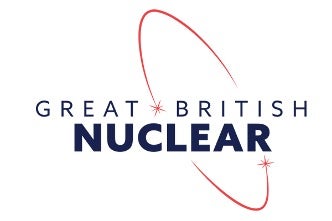
The six contenders in the UK’s small modular reactor (SMR) selection process have been given an additional two weeks to submit their initial round of project documentation. According to Energy Intelligence, the date for the next stage of the selection process has been postponed from 24 June to 8 July – four days after the UK general election on 4 July. However, Energy Intelligence said this was the result of a request from one of the one of the four US-based companies, and was not prompted by the election plans.
The UK Department for Energy Security & Net Zero (DESNZ) and Great British Nuclear (GBN) shortlisted six firms in October 2023 The winner of the competition will receive government backing to deploy a fleet of SMRs in the UK. The selected companies are EDF Energy, GE-Hitachi Nuclear Energy International, Holtec Britain, NuScale Power, Rolls-Royce SMR and Westinghouse Electric Company UK. Of these, GE-Hitachi Nuclear Energy International, Holtec Britain Limited, NuScale Power and Westinghouse Electric Company UK have American parent or partner companies.
The Small Modular Reactor (SMR) competition is part of the government’s plan to revive nuclear power and for the UK to lead the global race to develop cutting-edge technologies to rapidly deliver cleaner, cheaper energy and greater energy security. The government aims for up to a quarter of all UK electricity to come from nuclear power by 2050.
The six technologies selected all depend to a large extent on traditional nuclear technology. The 470 MWe Rolls-Royce SMR design is based on a small pressurised water reactor (PWR). The design was accepted for UK Generic Design Assessment review in March 2022 and Rolls-Royce SMR expects to receive UK regulatory approval by mid-2024. A Rolls-Royce-led UK SMR consortium aims to build 16 SMRs. The consortium – which includes Assystem, Atkins, BAM Nuttall, Jacobs, Laing O’Rourke, National Nuclear Laboratory, the Nuclear Advanced Manufacturing Research Centre and TWI – expects to complete its first unit in the early 2030s and build up to 10 by 2035.
GE-Hitachi’s BWRX-300 SMR features an innovative and simplified configuration, resulting in less concrete and steel needed for construction. GE-Hitachi says it is a cost-competitive solution that can be deployed for electricity generation and industrial applications, including hydrogen production, desalination, and district heating. “Using a combination of modular and open-top construction techniques, the Nth-of-a-kind BWRX-300 can be constructed in 24-36 months while achieving an approximate 90 percent volume reduction in plant layout. In addition, reducing the building volume by about 50% per MW should also account for 50% less concrete per MW – a significant improvement in both affordability and advantageous size.”
EDF’s NUWARD is a 340MWe SMR plant with two independent reactors (170MWe each) housed in a single nuclear building, optimising the use of mutualised equipment. It NUWARD says it is “a fully integrated Generation III+ PWR, “meeting the highest safety standards”. The design is focused on standardisation, modular manufacturing and simplicity for in-factory mass production, flexibility in the construction and operation phases.. The nuclear island building is semi-buried with a fully integrated reactor pressure vessel (RPV), and passive safety cooling system. The NUWARD SMR is being reviewed jointly by three safety authorities: France’s ASN), the Czech Republic’s SUJB) and Finland’s STUK.
NuScale’s VOYGR SMR plants are powered by the NuScale Power Module, a small PWR that can generate 77 MWe or 250 MWt (gross), and can be scaled to meet customer needs through an array of flexible configurations up to 924 MWe (12 modules). It is the first and only SMR to have its design certified by the US Nuclear Regulatory Commission (NRC) and it says it is being considered for deployment by more than 10 countries. It describes its design as “based on proven pressurised water-cooled reactor technology, and was developed to supply energy for electrical generation, district heating, desalination, commercial-scale hydrogen production and other process heat applications”.
Westinghouse launched its AP300 SMR earlier in 2023, as “the only SMR based on an advanced, large Generation III+ reactor already in operation globally”, the AP1000 technology. It “utilises the AP1000 engineering, components and supply chain, enabling streamlined licensing and leveraging available technical skills”. These factors “provide confidence that the first operating unit will be available in the early 2030s”. The AP300 SMR is already under consideration by customers in the UK, Europe, and North America.
Holtec’s SMR-160 advanced SMR is a pressurised light-water reactor, generating 160MWe (525MWt) using low-enriched uranium fuel, with flexibility to produce process heat for industrial applications and hydrogen production. The design has completed the first phase of the Canadian Nuclear Safety Commission’s three-phase pre-licensing vendor design review and is undergoing pre-licensing activities with the US NRC. Holtec has also applied for a Generic Design Assessment of the SMR-160 in the UK.


